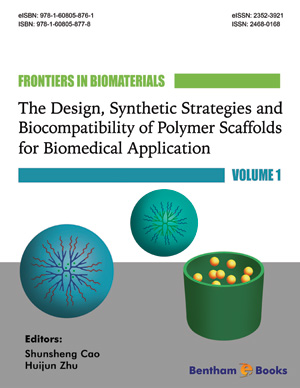Abstract
This chapter discusses in detail the design and synthetic strategies of ceramics for biomedical application, the biocompatibility as well as new emerging trends towards the application of ceramic materials in the biomedical field. Ceramics are a promising group of materials having potential applications in various fields such as engineering, technology, medicine etc. They are inorganic materials and can be prepared by high temperature as well as low temperature processes. The porosity, crystallinity, composition etc. are the features which determine the property of ceramics. These characteristics were tuned to get a desired property at the molecular level for the intended application by appropriate modification in the synthesis process of ceramics as well as functionalization with other materials. They could be designed from bulk materials to nano level materials. They usually fall in the category of bioinert, bioactive as well as resorbable ceramics. Based on their activity they find application in biomedical field. In the biomedical field ceramic materials were used as substitute materials for bone and teeth as well as coatings for metallic implants. Advanced research is going on in the molecular level modification of ceramic materials for developing artificial transplantation materials, drug release materials as well as materials for tissue engineering and gene therapy applications.
Keywords: Artificial implants, biocompatibility, bioglass, ceramics, calciumphosphate, drug delivery, gene delivery, hydroxyapatite, synthesis of ceramics, tissue engineering.












